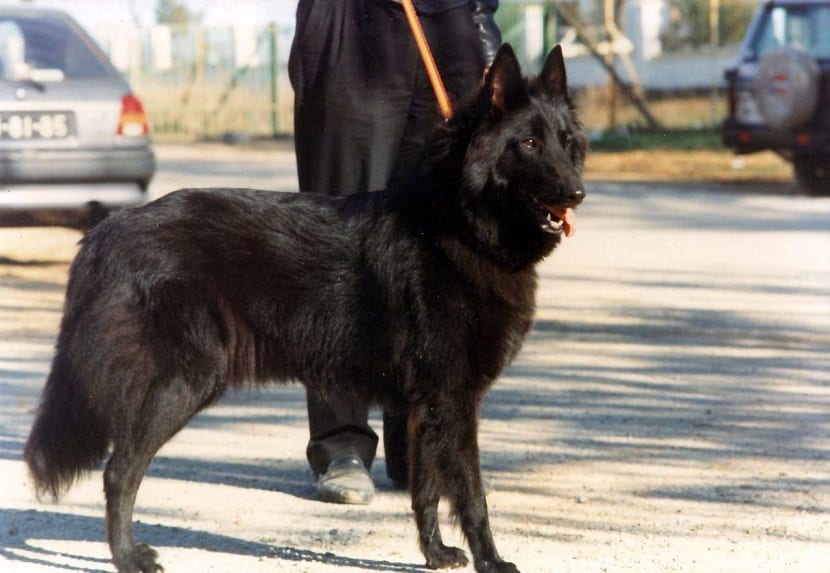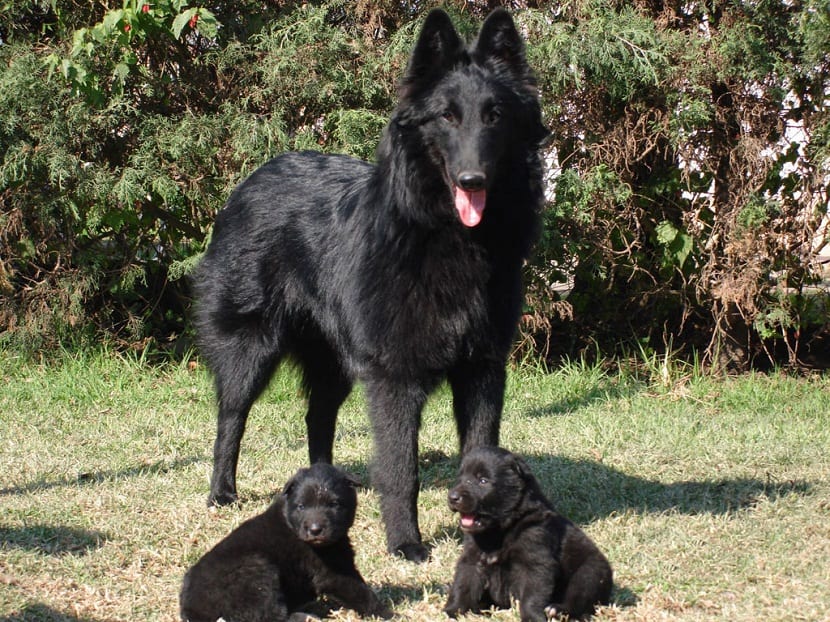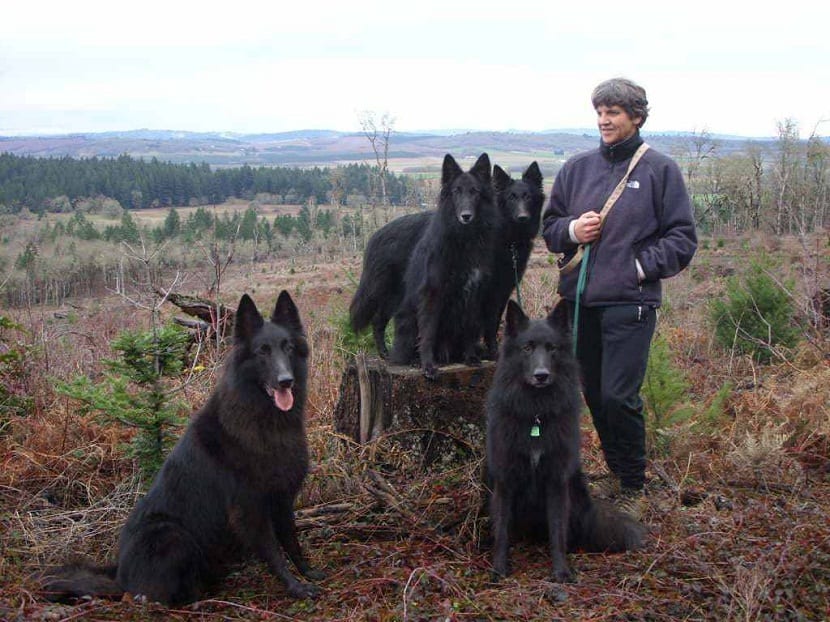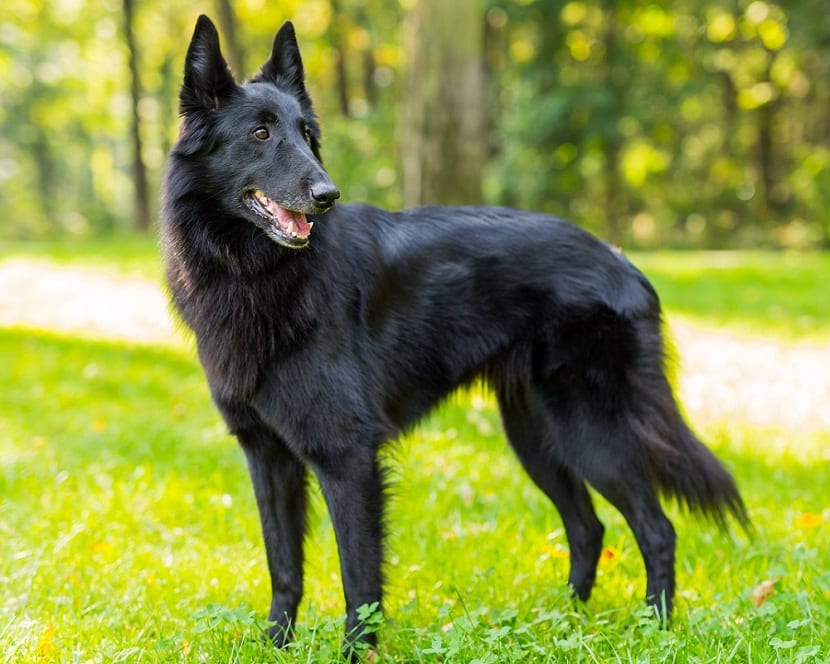
The Groenendael Shepherd is an exceptional pet with many positive qualities and a admirable intelligence and loyalty. There are four varieties of Belgian Shepherds, the Groenendael being one of the most popular.
Su black fur is beautiful and striking and his demeanor very elegant. His intelligence, emotional balance and ability to be trained and follow orders is exceptional.
Origin of the Belgian Shepherd Groenendael
The history of the Belgian Shepherd Groenendael dates back to the first shepherd breeder Nicholas Rose. Its name comes from the property that Mr. Rose had in the forest of Soignes, Groenendael and that means little green valley. In the 1896th century specifically in XNUMX, the Groenendael was the first shepherd breed. This variety has been accepted by the American Kennel Club (AKC) since 1959, under the name of Belgian Sheepdog.
Features
The Belgian Shepherd variety Groenendael has a black coat that gives it a stately presence. The height of the male at the withers is between 60 and 66 cm and between 56 and 60 for the female.. The approximate weight for both genders is 30 kg although on rare occasions the female exceeds 25 kg. The larger Groenendael are currently used as guard, defense and police dogs.
Sheepdogs should have a medium build. The physique and its features are similar to the wolf. It has straight ears, a pointed muzzle and a bushy tail. The structure of the body is square and they are very agile in their movements. The loin is straight, the head is elongated, the front is flat and the occipital crest is not very pronounced. The eyes are almond-shaped and dark brown in color. The muzzle is thicker at the base of the strong jaw and the bite is scissor-shaped. The coat can be considered medium to long in length, being most noticeable on the neck, thighs and tail. The tonality must be totally black. Only small white spots on the fingers or chest are accepted.
The Groenendael Shepherd has a tail that must reach up to the hock or go over it. In the resting state the tail hangs down and the end can be bent backwards. It has a lot of hair in the area of the tail, it even forms a pompadour. The front and rear limbs are powerful, strong, agile, and parallel when viewed from the front.
Temperament
The Groenendael is a dog that displays a alert, intelligent, courageous and loyal character. It has very marked instincts for protection, territoriality and herding. For this reason, it is very important to socialize correctly from a puppy. Besides, as he is very active and needs to keep himself entertained. Raising him with positive reinforcement is essential to the breed and being an owner who maintains a leadership attitude.
When the Belgian Shepherd Groenendael does not exercise frequently or his shepherd instinct is channeled correctly, he will want to impose himself on all members of the family and will be dangerous for other pets, since will view them with distrust and seek to eliminate them. He also develops a habit of barking excessively, chasing his tail, or licking himself constantly.
Education and training
Training it is a pleasant task since it has a great will to learn and please its owner. His energy is very active and always ready for action. Education begins as a puppy in daily and short sessions on socialization and control of the bite and sphincters. When he is an adult, he follows the basic orders and some disciplines such as Agility if desired.
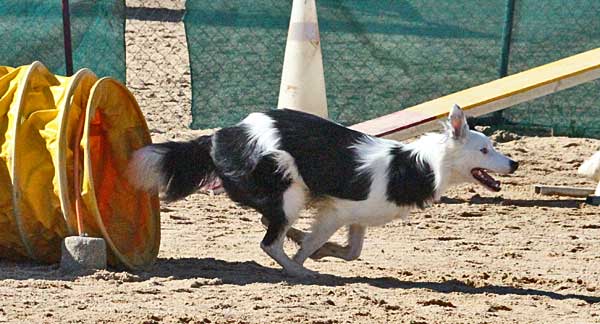
Basic care
The Belgian Shepherd Groenendael fits comfortably in a flat or a spacious house with a garden. However, in either case, they must be provided with sufficient physical and mental activity and it must not be forgotten that they are pets and do not tolerate loneliness. The Groenendael loses hair throughout the year and even more so in two annual shedding seasons. It should be brushed daily and taken to the dog groomer on a regular basis. He bathes every six or eight weeks with canine products indicated for the breed. Do not forget to clean the ears and teeth.
Curiosities
For the owner to develop a harmonious bond, it is necessary for him to know several facts about his pet:
- They require daily physical and mental activity.
- Education must start from puppies.
- They are extremely territorial.
- The character is loyal and kind.
- The average life span is twelve years.
- The relationship with the children is good, since he takes care of them as if they were his puppies, without taking his eyes off him. TO children should be educated to treat the pet with respect.
- They consume between 400 to 450 gr dry food. Preferably a high protein feed and no more than 15% between cereals, fruits and vegetables.
- The walks are made with a three or four meter leash or an extendable one that allows you some freedom. It should include some new terrain that allows them to explore. Flyball and Agility are recommended sports for the breed.
- These dogs can serve as a sheepdog, guardian, defense, guide for the blind, rescuers, patrollers, etc.
- These pets have a special connectivity with the owner and are extremely sensitive to changes in the owner's mood, especially when they are puppies.
"Salud"
Health in the Belgian Shepherd Groenendael has complications similar to those of other medium to large sized shepherds. Of course, it is necessary to have a veterinary control of vaccines and against parasites, fungi or infections. The frequent problem in dogs and also the Belgian one is hip dysplasia that can present without symptoms, moderate and severe.
To avoid this, it is necessary not to overfeed them and go to veterinary visits. The Index of dysplasia has decreased significantly in the Belgian thanks to the careful selection of the breeders. Among other hereditary diseases that the Belgian Shepherd can present are: progressive retinal atrophy that begins as night blindness by degenerative problem of the retina. The risk of losing your sight is high. This health problem is difficult to eradicate because it occurs in adult pets after they have already reproduced.
